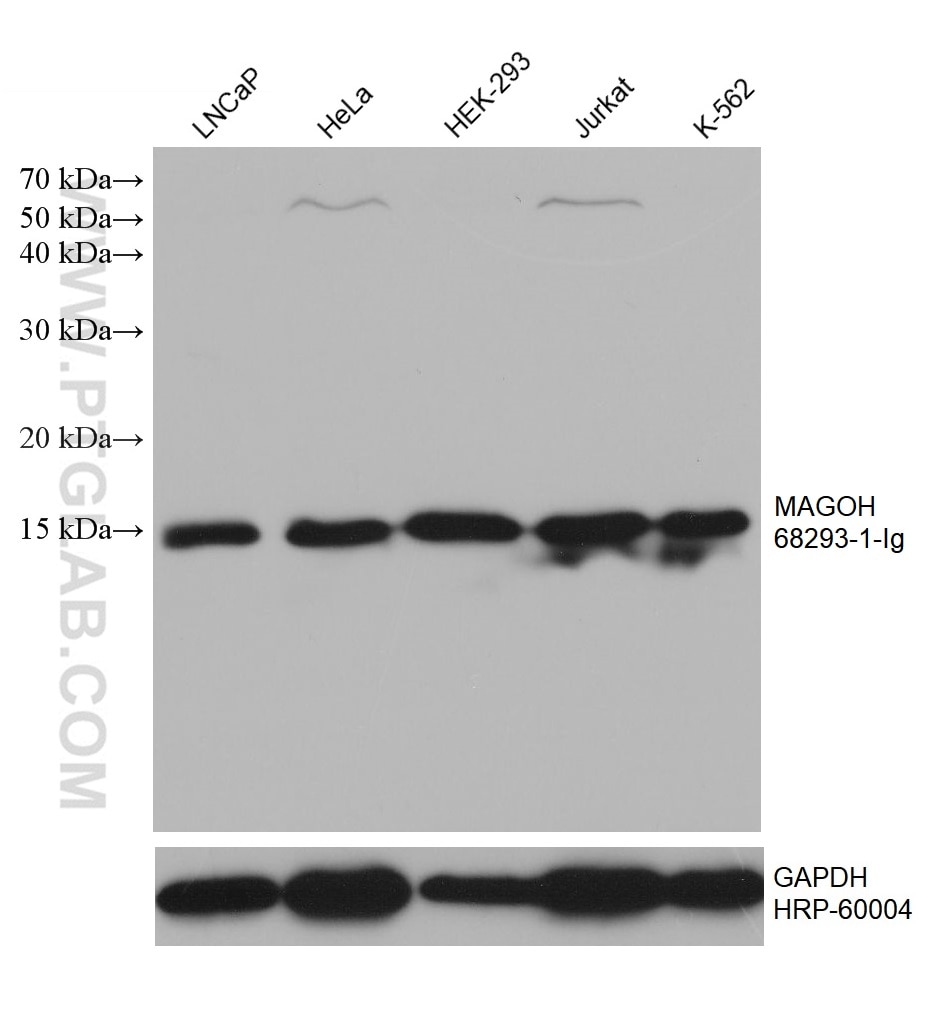Anticorps Monoclonal anti-MAGOH
MAGOH Monoclonal Antibody for WB, Indirect ELISA
Hôte / Isotype
Mouse / IgG1
Réactivité testée
Humain, Lapin, rat, souris
Applications
WB, Indirect ELISA
Conjugaison
Non conjugué
CloneNo.
2G6B9
N° de cat : 68293-1-PBS
Synonymes
Galerie de données de validation
Informations sur le produit
68293-1-PBS cible MAGOH dans les applications de WB, Indirect ELISA et montre une réactivité avec des échantillons Humain, Lapin, rat, souris
| Réactivité | Humain, Lapin, rat, souris |
| Hôte / Isotype | Mouse / IgG1 |
| Clonalité | Monoclonal |
| Type | Anticorps |
| Immunogène | MAGOH Protéine recombinante Ag3004 |
| Nom complet | mago-nashi homolog, proliferation-associated (Drosophila) |
| Masse moléculaire calculée | 146 aa, 17 kDa |
| Poids moléculaire observé | 17 kDa |
| Numéro d’acquisition GenBank | BC018211 |
| Symbole du gène | MAGOH |
| Identification du gène (NCBI) | 4116 |
| Conjugaison | Non conjugué |
| Forme | Liquide |
| Méthode de purification | Purification par protéine G |
| Tampon de stockage | PBS only |
| Conditions de stockage | Store at -80°C. 20ul contiennent 0,1% de BSA. |
Informations générales
MAGOH, belonging to the mago nashi family, is a component of a splicing-dependent multiprotein exon junction complex (EJC) deposited at splice junction on mRNAs. The EJC is a dynamic structure consisting of a few core proteins and several more peripheral nuclear and cytoplasmic associated factors that join the complex only transiently either during EJC assembly or during subsequent mRNA metabolism. Core components of the EJC functions to mark the position of the exon-exon junction in the mature mRNA and thereby influences downstream processes of gene expression including mRNA splicing, nuclear mRNA export, subcellular mRNA localization, translation efficiency and nonsense-mediated mRNA decay (NMD). MAGOH regulates the transcriptional activation of STAT3 by interfering complex formation between STAT3 and a core EJC component Y14.



